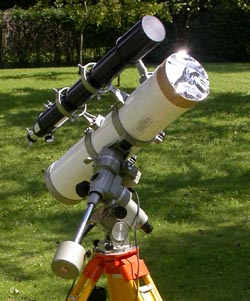 Telescopes allow us to view objects in outer space that we would not be able to see with the naked eye, thus, they are often called windows towards the universe. Telescopes allow us to study the solar system and formations of stars. They also enable us to view various planets, galaxies, asteroids, and more beyond our solar system and even the Milky Way. They act as barrier-breaking instruments between human beings and the universe. We owe it to telescopes that outer space is no longer a mystery to us and is now within our reach. Current telescopes bring with them a large array of equipment. The following accessories are the main components of a telescope. Also, the subsequent factors should be considered when searching for a telescope.
Telescopes allow us to view objects in outer space that we would not be able to see with the naked eye, thus, they are often called windows towards the universe. Telescopes allow us to study the solar system and formations of stars. They also enable us to view various planets, galaxies, asteroids, and more beyond our solar system and even the Milky Way. They act as barrier-breaking instruments between human beings and the universe. We owe it to telescopes that outer space is no longer a mystery to us and is now within our reach. Current telescopes bring with them a large array of equipment. The following accessories are the main components of a telescope. Also, the subsequent factors should be considered when searching for a telescope.
Telescope Accessories
Eyepiece
The eyepiece is crucial. Without it the telescope is pretty much worthless. Eyepieces are available in a range of dimensions. If you have a variety of eyepieces for your telescope, you could have the pleasure of viewing even the tiniest and distant objects with clarity.
Mount
A mount supports the telescope and allows you to look through it while standing. Since a telescope wont operate favorably with vibrations, you need to assure that it is on a secure mount.
Filters
Filters are generally a critical piece of equipment for astronomers simply because they minimize the glare around the eyepiece and scatter the sunshine. Thus, it makes it easier to look at distant objects.
Barlow Lens
The magnification of telescopes is helped with the Barlow lens. Barlow lenses can be obtained in several different sizes. We have to take care in deciding upon the dimensions that best fits the eyepiece for a given telescope.
Factors To Consider When Looking For A Telescope
Aperture
Aperture is the opening which light travels thru. It is best to select a telescope with a larger aperture. This will provide a clearer and and higher-quality image.
Focal Length
The focal length is distance between the optical center of the eyepiece and the optical center of the lens. Magnification in telescopes is determined by the focal length. Larger focal lengths suggest far more magnification.
Resolution
Resolution permits telescopes to produce a more in-depth picture. Thus, resolution is an important factor when looking for a telescope. You should also consider the fact that resolution is determined by the aperture. The higher the resolution will be the larger the aperture.
Types Of Telescopes
Reflector (Newton) telescopes and refractor (Galileo) telescopes are the two main types of telescopes. The refractor telescope employs an objective lens that bends the light in the direction of the eyepiece. Whilst the reflector telescope employs a mirror, which collects the light and directs it toward the eyepiece.
Do not become obsessed with magnification when searching for a telescope. For example, you can have a telescope with a very high magnification, but it will be of little use if it only produces massive unclear images. Remember to consider all of the factors mentioned in this article when looking for a telescope. This will allow you to find the best telescope for you and your viewing purposes.